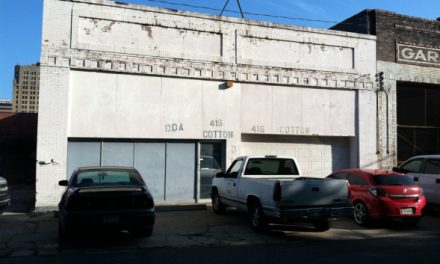The Covid downtime shook up a lot of initiatives; one of them was the work of a group of citizens concerned about the future of downtown’s historic Cross Bayou A Truss Bridge. The steering committee is made up of various engineers including City of Shreveport engineer Patrick Furlong, the head of the Downtown Development Authority, committee founder Pat Wilson of Huval and Associates and committee chair Elba Hamilton of Aillet, Fenner, Jolly, and McClelland.

Cleaning up the bridge.
During their time pre-Covid, the group applied for grants and worked to bring in partners interested in a goal of rehabbing the bridge as a pedestrian walkway that would connect bike- and foot-paths, set up exhibits and talked to groups about the history of the bridge and its importance, and organized clean ups around the bridge. We’re glad to see the group back together and to know that they are a strong advocte for this special structure.
How special is it? Very.
HGTV fanatics will remember a show called ‘If Walls Could Talk’ that focused on fun facts buried beneath the sheetrock of homes across the country. It was always interesting to see what strange things homeowners had unearthed and even more entertaining to hear the homeowners’ reactions to these bits of history. As I walk through downtown Shreveport each day, I also wish walls and spaces could talk because, oh, the hair-raising and scandalous tales they could tell! History, lore and legend is everywhere downtown but a fairly significant number of stories that you might classify as ‘tall tales’ are actually quite true.

J.A.L. Waddell
Take for example the story of J.A.L. Waddell, civil engineer and prolific bridge builder of the late 1800- and early 1900s, owner of a remarkable Walrus mustache and even more remarkable pin curls adorning his forehead. Waddell was born in Canada, travelled extensively, spoke and wrote Latin, and authored the definitive book on bridge building. From his photos, it appears he loved wine, good food and mustache wax, and enough documents remain to prove he may have loved bridges and bridge building more than anything else. Most of his life was spent in Kansas City, Missouri and it is quite likely that he never came through Shreveport, yet we have something that connects us to him in a very personal way.
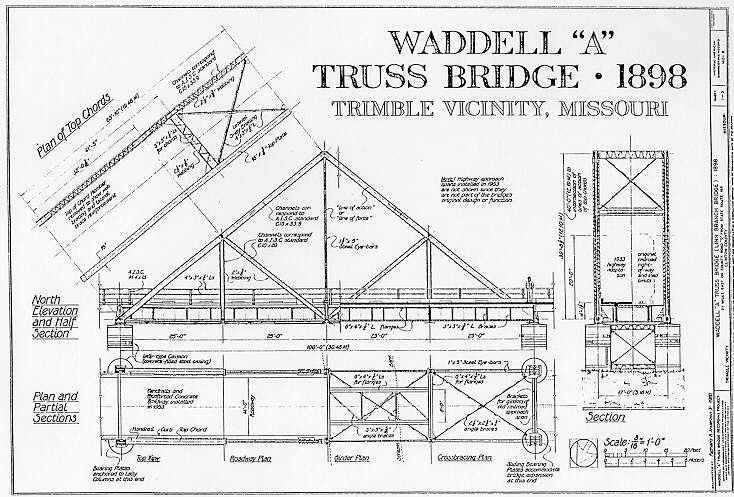
We have a bridge designed by him, a mostly hidden, mostly ignored structure just north of the Central Business District downtown. It is not just any Waddell bridge, and there were many—some one thousand, by most counts.
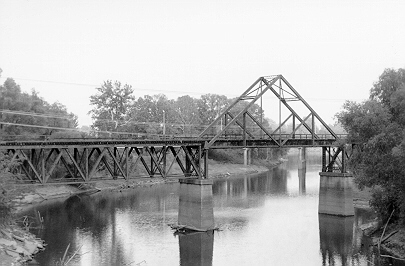
It is one of just two of its kind remaining in the entire country, a railroad bridge called the Waddell A- Truss that spans Cross Bayou just north of Sam’s Town Casino.
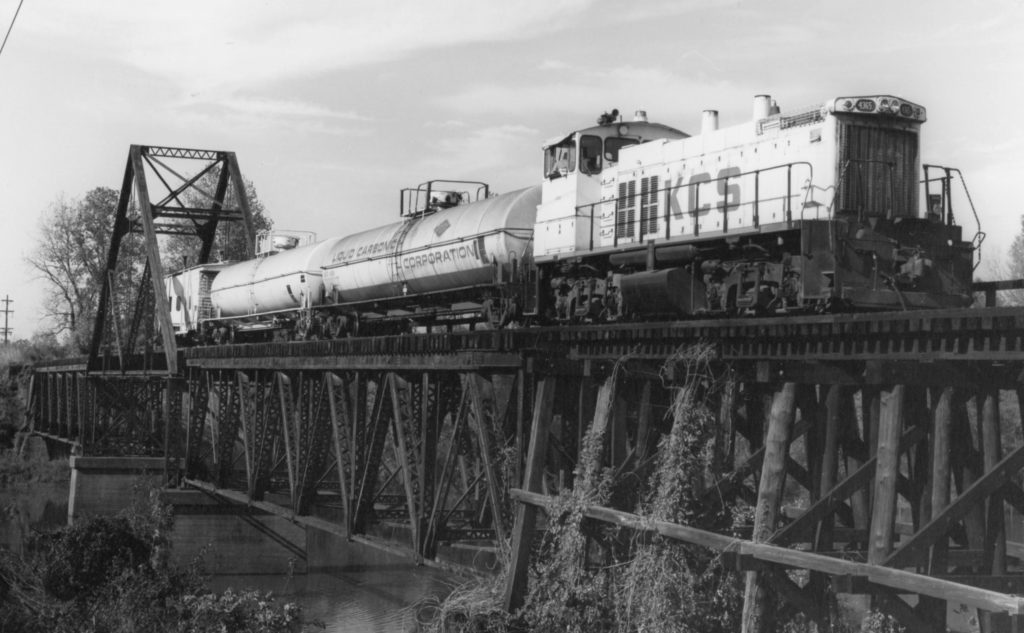
Photo by Warren D. Caileff, Jr.
The A-Truss bridge was built in 1896 but lived a relatively short productive life that ended as railcars got heavier. By 1915, it was mostly obsolete. In 1991 after a threat of demolition, KCS gave the bridge to the City of Shreveport and a few years later, it was added to the National Register of Historic Places. There is hope now that the fortunes of the long-forgotten bridge will improve. Waddell admirer Pat Wilson, a Lafayette, La., resident and engineer at Huval and Associates developed a love for the bridge and has been working to create a desire to transform it into a highly-visible pedestrian and bicycle span that would connect people, initially, from downtown to some levee trails and the Shreveport riverfront.
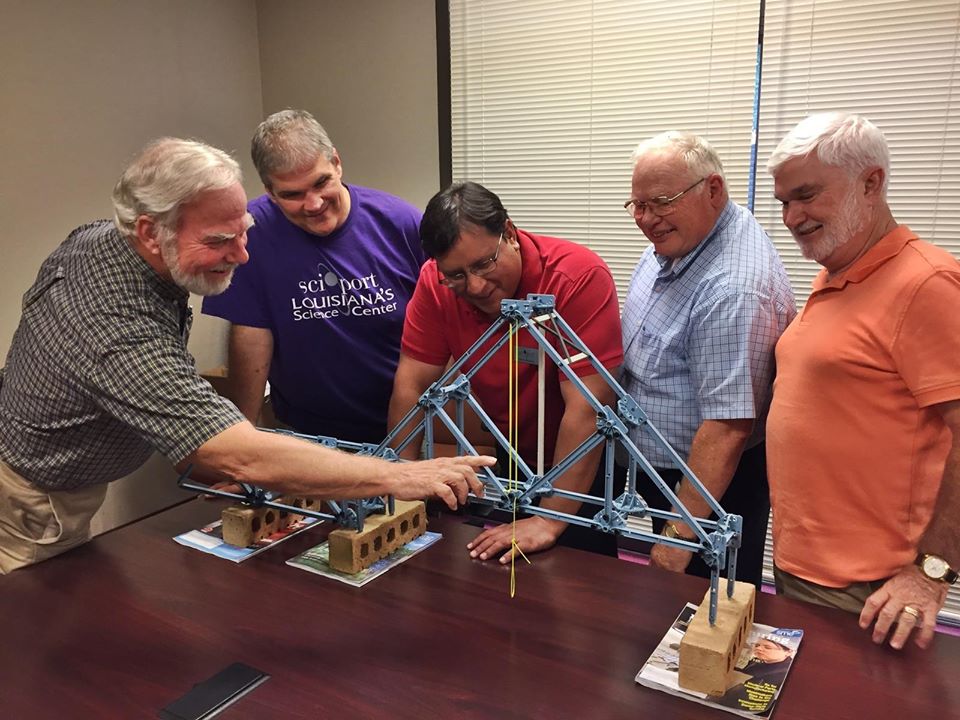
Pat Wilson on the far left, Al Dumas, a member of the A-Truss Bridge Committee, in the blue plaid.
Wilson grew up in Memphis, where bridge building is an art form and where his love of the structures began. He stumbled upon the A-Truss in 2000, when a trip from Oklahoma City to New Orleans led him through Shreveport. He began studying the bridge and Waddell in general, and in 2016, he presented a talk on the bridge to the Society of Civil Engineers.
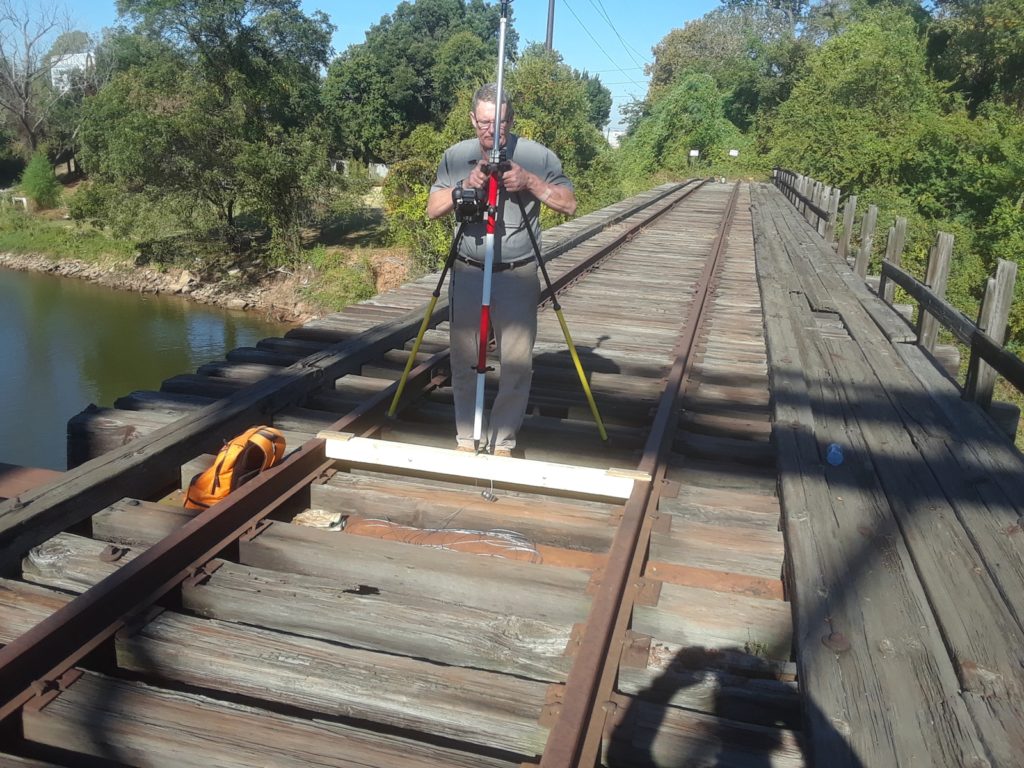
Wilson and his firm have gathered detailed measurements of the bridge needed to find the dollars for a thorough structural assessment. This task will require special equipment and serious man (and woman) hours to test the old timbers in the deck, which are likely rotten, and the metal struts, bracing and stringers, which is hoped are structurally sound. Only when Wilson and his volunteer team know the condition of the bridge will they know what can ultimately be done for it. In the meantime, the 127-year old structure will wait, as it has done so patiently before.
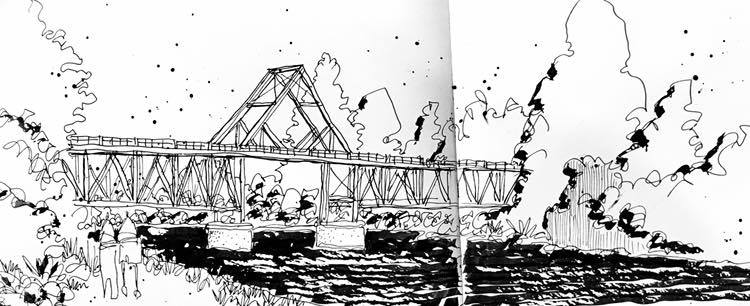
A-Truss Bridge Sketch by architect Mike McSwain
We encourage you to see the bridge and take pictures of it. It is visible from the Clyde Fant Parkway just north of Sam’s Town Casino and Resort.
(Please do not attempt to walk on the bridge as it is not structurally sound.)


